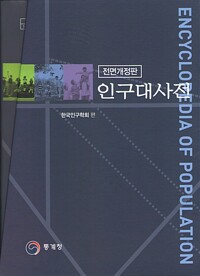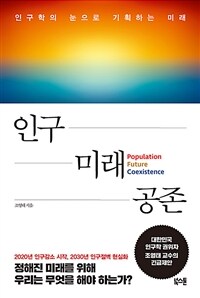
Africa's population: in search of a demographic dividend
- 발행사항
- New York : Springer Berlin Heidelberg, 2017
- 형태사항
- 526 p. ; 24 cm
- ISBN
- 9783319468877
- 청구기호
- 331.3 G881a
- 서지주기
- Includes bibliographical references and index
소장정보
| 위치 | 등록번호 | 청구기호 / 출력 | 상태 | 반납예정일 |
|---|---|---|---|---|
이용 가능 (1) | ||||
| 1자료실 | 00018119 | 대출가능 | - | |
- 등록번호
- 00018119
- 상태/반납예정일
- 대출가능
- -
- 위치/청구기호(출력)
- 1자료실
책 소개
This book examines the promises as well as the challenges the demographic dividend brings to sub-Saharan Africa as fertility rates in the region fall and the labor force grows. It offers a detailed analysis of what conditions must be met in order for the region to take full economic advantage of ongoing population dynamics.
As the book makes clear, the region will need to accelerate reforms to cope with its demographic transition, in particular the decline of fertility. The continent will need to foster human capital formation through renewed efforts in the areas of education, health and employment. This will entail a true vision and determination on the part of African leaders and their development partners.
The book will help readers to gain solid knowledge of the demographic trends and provide insights into socioeconomic policies that eventually might lead sub-Saharan Africa into a successful future.
New feature
This book examines the promises as well as the challenges the demographic dividend brings to sub-Saharan Africa as fertility rates in the region fall and the labor force grows. It offers a detailed analysis of what conditions must be met in order for the region to take full economic advantage of ongoing population dynamics. As the book makes clear, the region will need to accelerate reforms to cope with its demographic transition, in particular the decline of fertility. The continent will need to foster human capital formation through renewed efforts in the areas of education, health and employment. This will entail a true vision and determination on the part of African leaders and their development partners. The book will help readers to gain solid knowledge of the demographic trends and provide insights into socioeconomic policies that eventually might lead sub-Saharan Africa into a successful future.≪ Africa needs a serious dialogue on population, the demographic transition, and the demographic dividend. This book with its comprehensive approach to the subject, makes an invaluable contribution. A must read for policymakers and development practitioners. ≫
Ngozi Okonjo-Iweala, former Finance Minister of Nigeria and former Managing Director of The World Bank.
?≪ Everyone concerned about human welfare in sub-Saharan Africa should know about the demographic dividend, what it is, what causes it and how to strengthen it. This volume provides an excellent summary of these crucial issues. The sooner policymakers pay attention and take the proper actions, the better. ≫
John Bongaarts, Vice President of the Population Council
?≪ There is no more important socio-economic issue for this century than that of whether Africa's currently rapid population growth turns out to be a dividend or a curse. As a comprehensive, up-to-date guide to the potential and the challenges, this book deserves to be widely read and debated. ≫
Bill Emmott, former Editor-in-Chief of The Economist
목차
1) Introduction: Hans Groth and John F. May.- Part I: Sub-Saharan Africa's Population: Country and Regional Case Studies: 2) Africa's Population: History, Current Status, and Projections: Jean-Pierre Guengant.- 3) Reaping a Demographic Dividend in Africa's Largest Country: Nigeria: Emmanuel Jimenez and Muhammad Ali Pate.- 4) The Second Biggest African Country Undergoing Rapid Change: Ethiopia: Assefa Hailemariam.- 5) The Third Biggest African Country: The Democratic Republic of the Congo: David Shapiro, Basile O. Tambashe, and Anatole Romaniuk.- 6) A Case of Almost Complete Demographic Transition: South Africa: Tom A. Moultrie.- 7) Fertility Transitions and Schooling Dividends in Sub-Saharan Africa: The Experience of Vanguard Countries: Parfait M. Eloundou-Enyegue and Noah Hirschl.- 8) Countries with Fertility Transitions in Progress: Jean-Francois Kobiane and Moussa Bougma.- 9) Countries with Slow and Irregular Fertility Transitions: Gervais Beninguisse and Liliane Manitchoko.- 10) Countries with Very Slow or Incipient Fertility Transitions: Hamidou Issaka Maga and Jean-Pierre Guengant.- 11) Demographic Challenges of the Sahel Countries: John F. May, Jean-Pierre Guengant, and Vincent Barras.- Part II: Drivers of the Demographic Dividend: 12) The Demographic Dividend: A Potential Surplus Generated by a Demographic Transition: Vincent Turbat.- 13) African Fertility Changes: Bruno Schoumaker.- 14) Access to Family Planning and Women's Health: Ndola Prata.- 15) Manpower, Education, Skills, and Jobs in Sub-Saharan Africa: Nicolas Eberstadt.- 16) Marriage Patterns and the Demographic Dividend: Dominique Meekers and Anastasia Gage.- 17) Mortality, Health, and Aging in Sub-Saharan Africa: Bruno Masquelier and Almamy Malick Kante.- 18) Acute and Chronic Health Challenges in Sub-Saharan Africa: An Unfinished Agenda: Thomas Zeltner, Farhad Riahi, and Jonas Huber.- 19) New and Reemerging Infectious Diseases in Sub-Saharan Africa: Alan Whiteside and Nick Zebryk.- 20) Migration, Urbanization, and Slums in Sub-Saharan Africa: Blessing Mberu, Donatien Beguy, and Alex Ezeh.- 21) Internal and International Migration: Nikola Sander and Elin Charles-Edwards.- Part III: Development Challenges: 22) Economic Growth and Public and Private Investments: Vincent Turbat.- 23) Governance, Transparency, and the Rule of Law: Anna Zuber, Christian Blickenstorfer, and Hans Groth.- 24) The Role of Natural Resources: Daniel J. Mabrey.- 25) Population, Food Security, and Climate Change: Africa's Challenges: Jason Bremner.- 26) The Development of Organized Commodity Exchanges in Africa: An Economic Analysis: Heinz Zimmermann and Marco Haase.- Part IV: Assembling Sub-Saharan Africa's Jigsaw: 27) Is a Rapid Fertility Decline Possible? Lessons from Asia and Emerging Countries: Feng Wang.- 28) Demographic Dividend Models: Scott Moreland and Elizabeth Leahy Madsen.- 29) The Roles of Governments, the Private Sector, and the International Community: Jotham Musinguzi.- 30) Conflicts and the Demographic Transition: Economic Opportunity or Disaster?: Siri Aas Rustad, Gudrun Østby, and Henrik Urdal.- 31) Conclusions: Hans Groth and John F. May.





